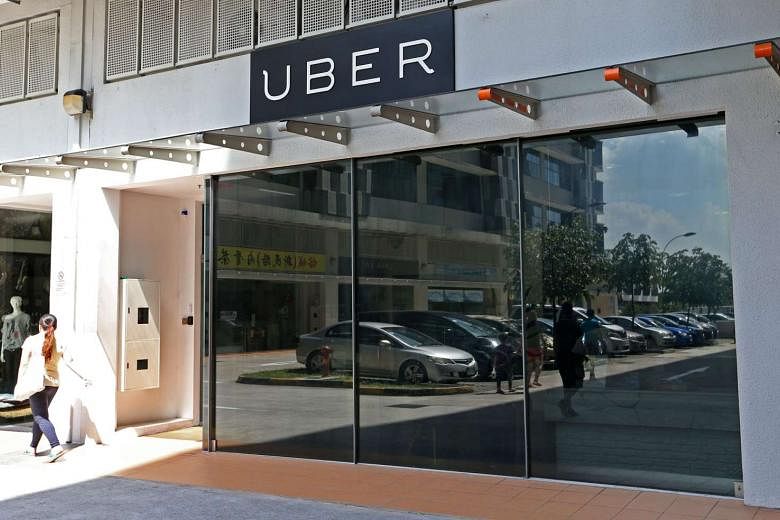It is touted to be "clearer and simpler", but Uber's new fare system has drawn brickbats instead.
The new upfront fare system shows users the exact amount they have to pay even before they take a ride. It replaces one in which users are given a fare estimate and a surcharge, or surge pricing, that they have to pay when there is increased demand for the service.
Since the new system kicked in last Wednesday for the popular UberX service, a private-car hire service, many have gone to the start-up's local Facebook page to complain about a lack of transparency in fares and a rise in prices.
Mr Eric Teo, 41, a former equity analyst, said: "Previously, I would be told if the fares are 1.3 or 1.5 times more, but now I have no basis for comparison as to how much a trip actually costs without the surcharge. It lacks transparency."
However, Uber's head of communications for Singapore and Malaysia Leigh Wong told The Straits Times on Monday that riders now have "better clarity" on the fare they need to pay before they confirm their trips.
"Upfront fares take into account all the factors that typically affect the price of a trip, including the expected time, distance and traffic, tolls, how many other riders are requesting rides at that time, and how many drivers are nearby," he said.
Assistant Professor Yang Nan of the National University of Singapore Business School's strategy and policy department said yesterday that Uber's change in fare system is partly due to the "unpopularity" of surge pricing.
"I remember a few cases last year in which commuters complained about being ripped off by surge pricing when public (MRT) transit broke down."
Uber's surge pricing uses an algorithm to calculate a variable number which the fare is multiplied by. Fares were reportedly up to five times more during the massive MRT breakdown on July 7 last year, but Uber said it had then disabled surge pricing.
Upfront fares were first introduced with Uber's ride-sharing option UberPool, which was launched here on July 1. It gives commuters going in a similar direction the choice to share a car and save up to a quarter of the fare.
But the roll-out of upfront pricing for UberX has come under fire, with many claiming that fares have been increased surreptitiously.
Facebook user Jason Ooi wrote that a ride that normally cost him $6 is now $8 to $13 throughout the day. Another Facebook user, Mr Anoop Rachamalla, claimed that the minimum fare for an Uber ride to work for him in the morning had more than doubled from $12 to $29.
But Uber said there was no change in its UberX fare structure.
Asked about Uber's upfront fares, Mr Lim Kell Jay, head of Grab Singapore, said: "Seeing other players following the same business model is testament that our strategy works."
SEE HOME


